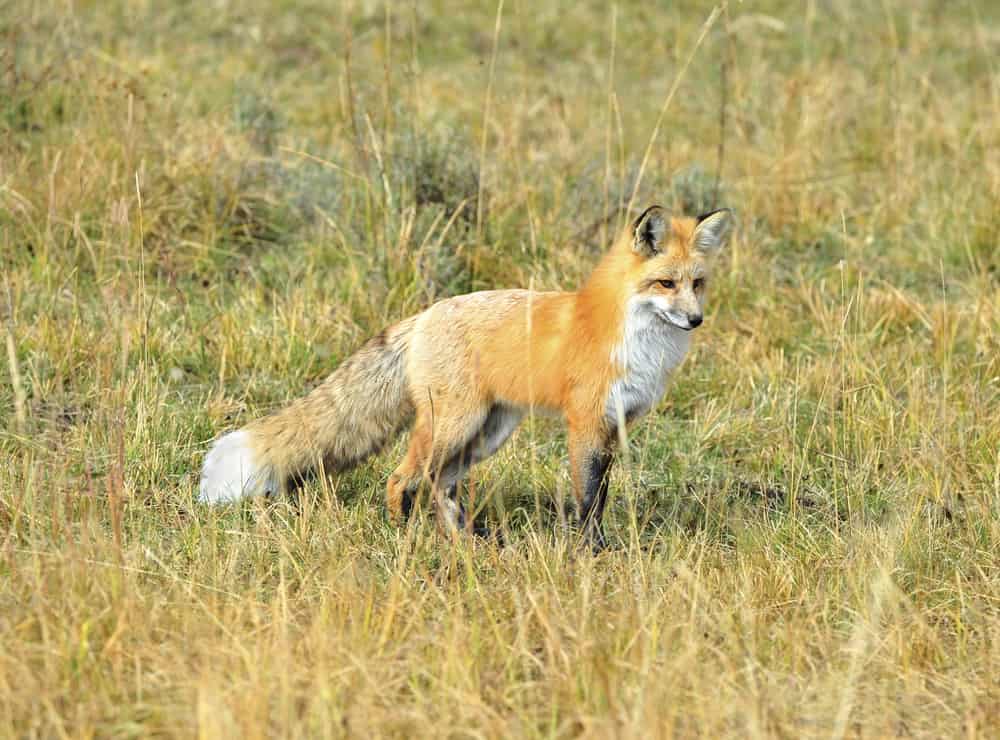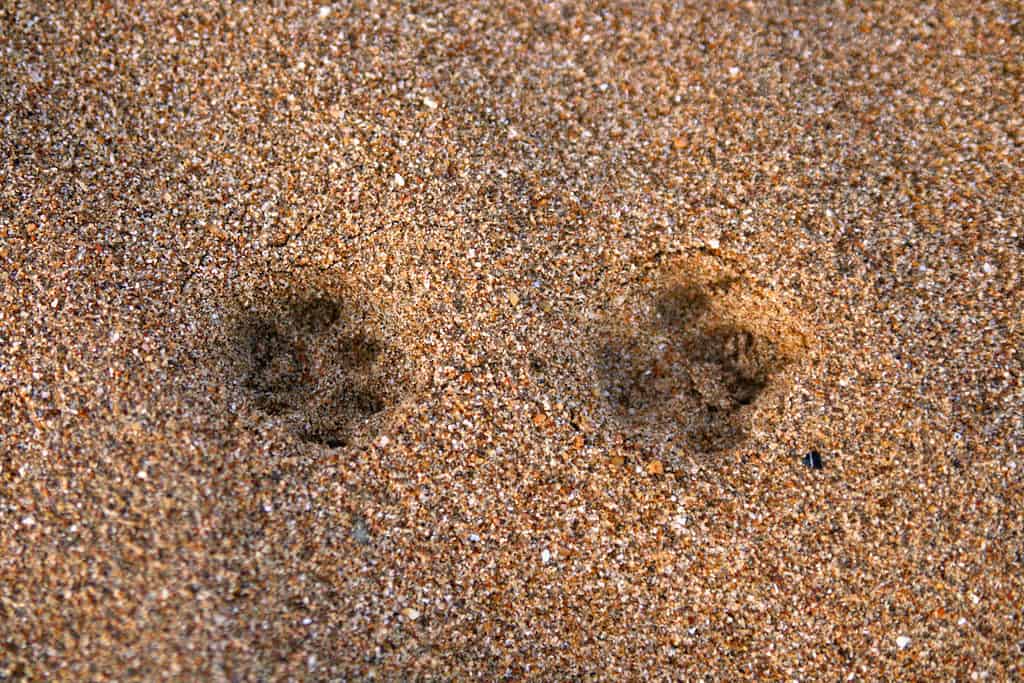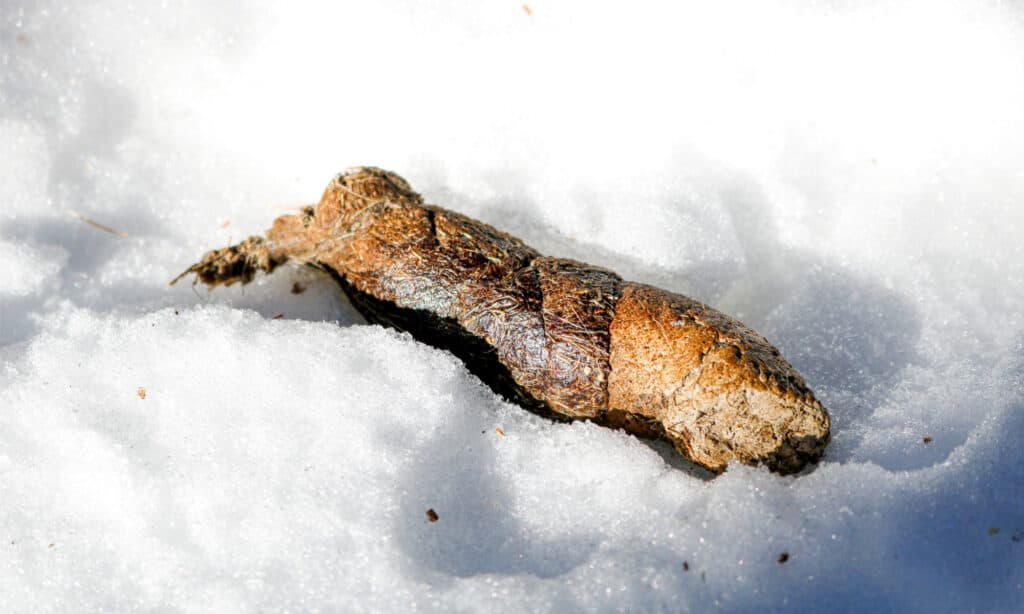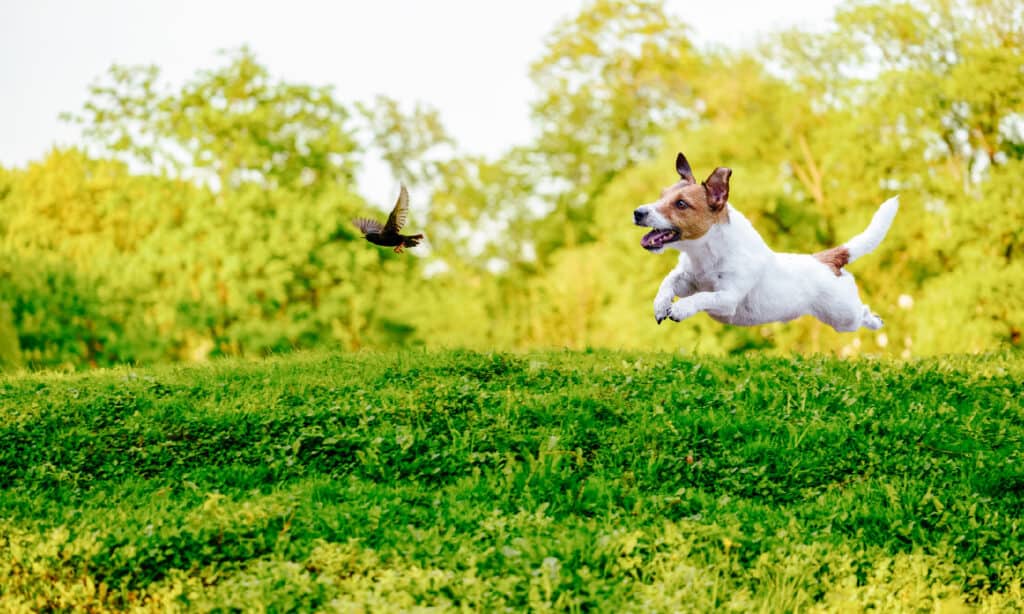When you are in the wilderness, knowing what animals may be there with you is important. Whether you are hunting or just curious to know about an area’s inhabitants, identifying tracks can be a valuable skill. It is also helpful when you have to keep an eye out for signs of predatory species. Although there are many predators you can run into, we will first focus on foxes. This complete guide to fox tracks will inform you of where to find them, what they look like, and how they can be useful. Read on for all things fox tracks!
| Characteristic | Description |
|---|---|
| Size | Length: 1.75-2.5 inches Width: 1.5-2 inches |
| Shape | Oval |
| Features | 4 toe pads, 1 palm pad |
| Claws | Present |
Animal Background
Description

The most common fox is the red fox. Their tracks can be found everywhere except Antarctica.
©worldswildlifewonders/Shutterstock.com
Foxes are members of the subfamily Caninae which includes other canines like domestic dogs, wolves, coyotes, wild dogs, and jackals. Diverse fox species around the world come in many different shapes, sizes, and colors. In general, foxes are medium or small in stature. There is considerable variation between species, however. The largest species, the red fox, weighs up to 30 pounds, and the smallest species, the fennec fox, weighs up to 3 ½ pounds. Their coat colors vary greatly and are adaptive to each species’ habitat. The Arctic fox, for example, has a white coat that allows for camouflage in the snow. The crab-eating fox, however, has a brown, grey, and black coat that is better suited for life in woodlands and subtropical forests.
Distribution
Foxes exist around the world on every continent except Antarctica. The most prolific genus of foxes, Vulpes, includes the red fox, swift fox, Arctic fox, and kit fox, all of which can be found in North America. The red fox and other Vulpes species such as the Bengal fox, Tibetan fox, fennec fox, and Blanford’s fox, inhabit Europe, Asia, and Africa.

Foxes live in every habitat type, including the Artic tundra.
©JoannaPerchaluk/Shutterstock.com
The great diversity of foxes allows them to inhabit many different types of habitats. From the frigid snowfields of the Arctic to the driest deserts, and wettest rainforests, foxes are incredibly adaptable. In fact, the red fox alone inhabits the tundra, deserts, mountainous regions, boreal forests, and tropical rainforests. Red foxes are the most prolific and widespread species.
Fox Tracks
Fox Paw Morphology
The most common fox, the red fox (Vulpes vulpes), has paw morphology representative of other foxes; however, there is variation amongst species. The forepaws have 5 digits, and the hind paws only have 4. The fifth digits on the forelimbs, the dewclaws, are positioned higher up on the posterior side of the fox’s leg. They will not leave a noticeable mark on the fox tracks. Foxes have semi-retractile claws that usually appear in their tracks as small dots above the 4 toe pad impressions. A red fox’s front pawprint is approximately 1.75 to 2.5 inches long and 1.5 to 2 inches wide. Their hind paws are often slightly smaller.

This red fox is showing its front paw. It has 4 toe pads, a palm pad, claws, and a dewclaw.
©Eric Isselee/Shutterstock.com
Fox pawprints are most likely to be mistaken for wolf, coyote, or domestic dog tracks depending on where they are found. In places where these species coexist, there are some important tricks you can use to distinguish fox prints. First, fox prints are usually smaller than wolf and coyote prints. Coyote tracks are approximately 2.5 by 2 inches long and wide and wolf tracks are typically around 5 by 4 inches. Although coyote tracks are not much larger than fox tracks, coyotes weigh substantially more than foxes so their tracks will appear deeper and more heavy-set.
Snow

These red fox tracks are clearly imprinted on the snow because it is compact and shallow.
©Matauw/Shutterstock.com
There are two main species of foxes that inhabit snowy areas, the red fox, and the Arctic fox. The Arctic fox is widely distributed throughout the Arctic tundra biome. The red fox has a broad distribution that includes part of the Arctic circle, as well. Unlike the red fox’s oval tracks, the Arctic fox’s are very round. This is similar to other arctic species that are adapted to tread on ice and snow. Prints may be blurred or appear soft on the edges where fur from the paw has matted the soft snow. Tracks also may be indiscernible in particularly deep areas.
Mud

This red fox’s track in the mud has clear impressions of the fox’s claws.
©Kristine Rad/Shutterstock.com
The boreal forest is the largest biome on Earth and is home to many fox species. In forests, there are muddy areas perfect for capturing clear animal tracks. Depending on wetness and proximity to bodies of water, impressions of claws, toe pads, and palm pads will likely be visible in muddy fox tracks. Many other canid species and felid species inhabit forests so differentiating pawprints may be difficult in this biome. Key distinguishing factors will be their size and the presence of claw marks. Felines, like bobcats, have fully retractile claws that do not appear in their tracks.
Other

Fox tracks in the sand may appear smaller than those in the mud or snow. These red fox tracks were found on a wet sandy beach in Australia.
©Keith Tarrier/Shutterstock.com
Many fox species inhabit sandy areas, including deserts. Desert-dwelling species include fennec foxes (also known as desert foxes), kit foxes, and the widely distributed red fox. In sand, tracks are often faint and easily affected by environmental conditions. The loose ground is subject to disturbance by wind, water, shifting sands, and other animals. All animal tracks, including fox tracks, will appear smaller than on other surfaces and will be less defined than tracks in the mud. Tracks will be harder to see and more prone to disturbance if the sand is very dry.
Other Tracking Tips
Scat

Fox scat is cylindrical with one pointed end. Identifying scat can be helpful when identifying tracks.
©iStock.com/lauraag
When tracking foxes, another important clue is their scat. If you are identifying tracks, scat in the area will help narrow down what animals have passed through. First of all, fox scat is cylindrical with one pointed end. It is typically around two inches in length and ½ an inch in diameter. Depending on the species and their diet, there may be small bones, nuts, or seeds in the excrement. In addition, the texture or level of degradation of the feces can indicate how old it is and when the animal was likely in the area.
Foxhunting Dogs

Jack Russell
terriers were originally bred as foxhunting dogs.
©iStock.com/alexei_tm
Another method of tracking foxes is the use of foxhunting hounds. Several dog breeds have historically been used to chase foxes out of their burrows. For example, the Jack Russel terrier was bred for this purpose. These dogs are bred for visual acuity, speed, and courageous behavior so they can identify and chase foxes.
The photo featured at the top of this post is © Ondrej Prosicky/Shutterstock.com
Thank you for reading! Have some feedback for us? Contact the AZ Animals editorial team.







